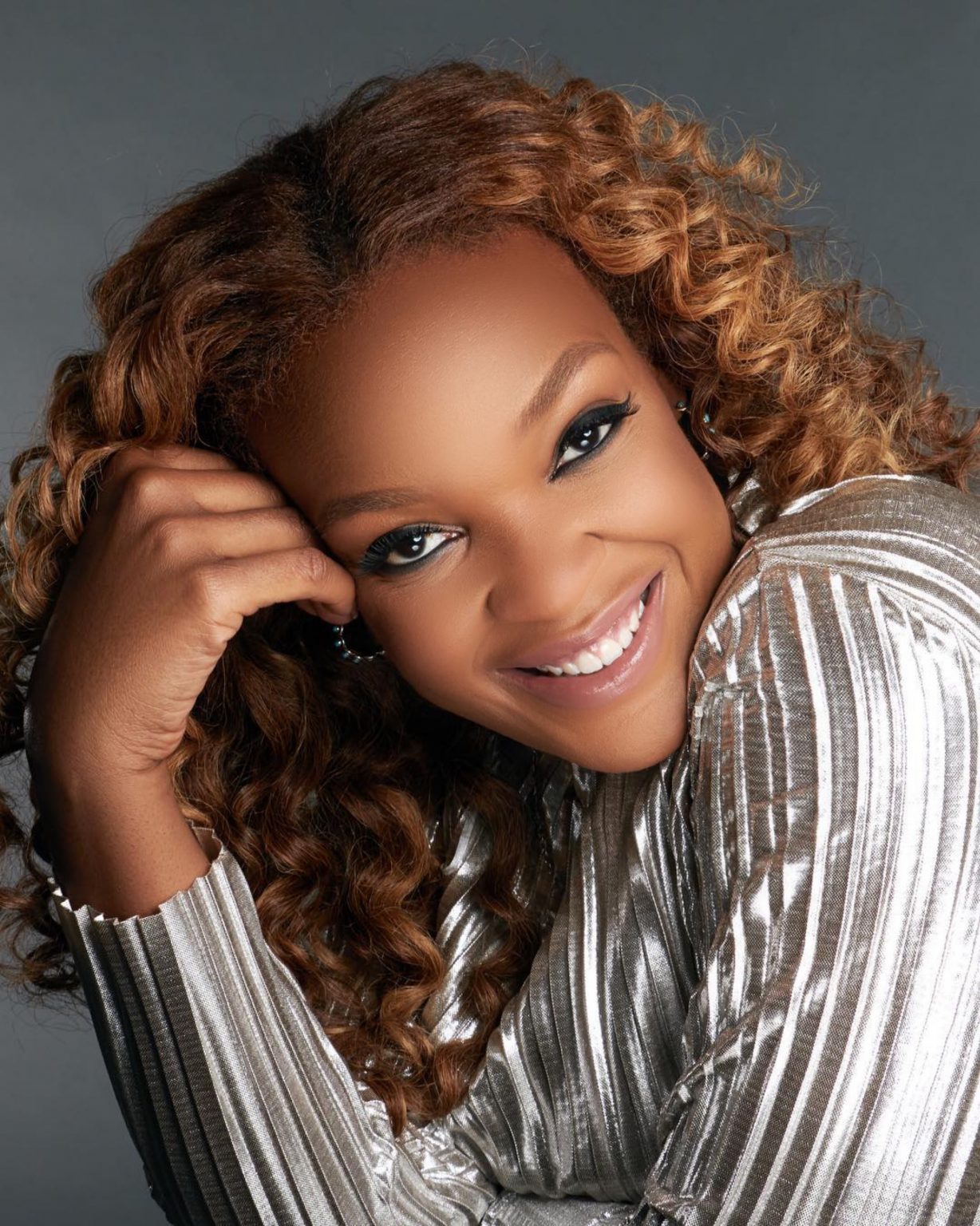
- Fashion
Cheryl Bergamy: Black Hair Stylist to the Stars
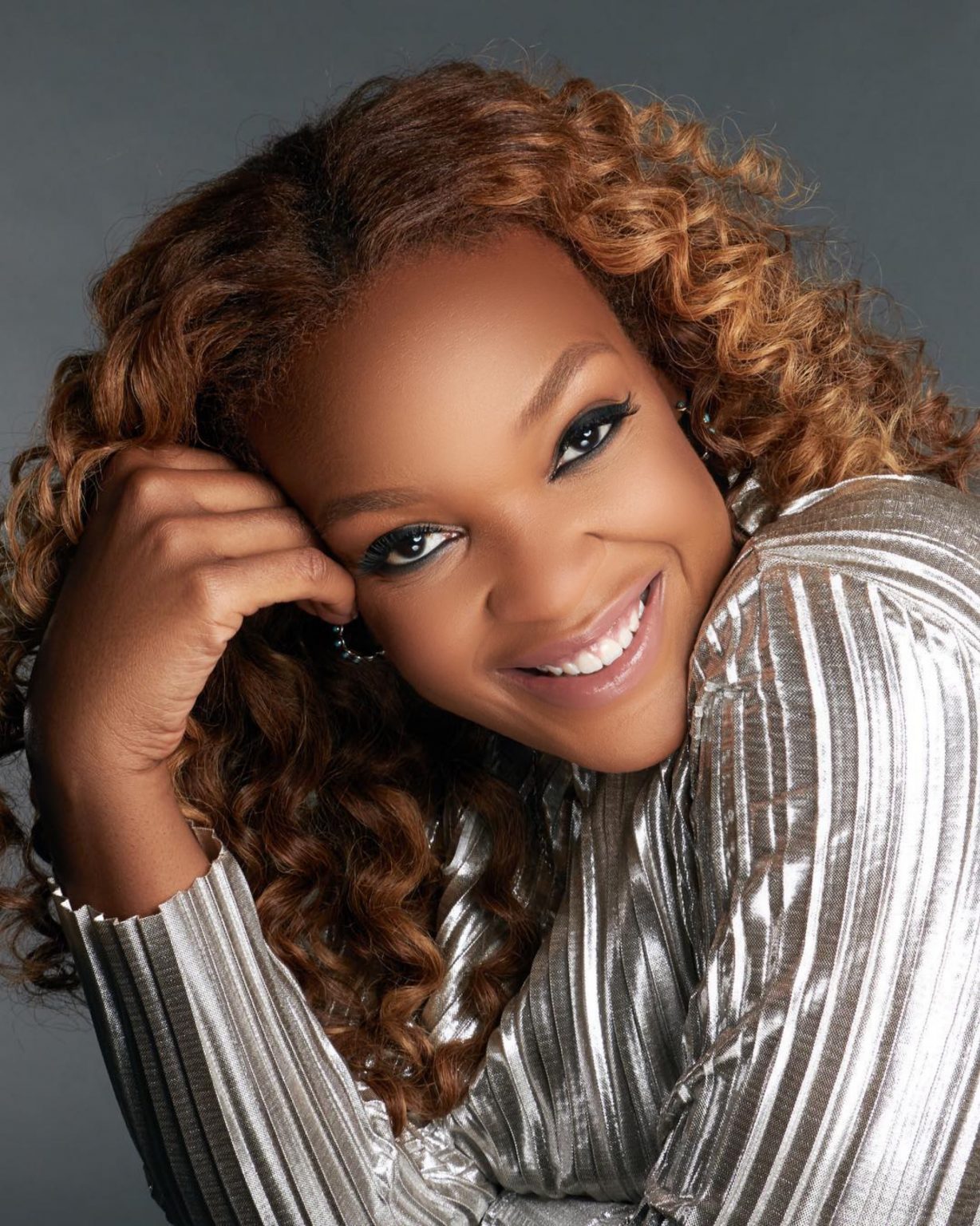
“It’s Black History Month,” Cheryl Bergamy, hair groomer to the likes of John Legend, Queen Latifah, and Shahadi, states while talking about her career that spans fashion week for top couture designers, to up-close beauty and fashion spreads in Harper’s Bazaar, WWD, Vogue and more. “And one of the things I love about black culture is our creativity. We make things happen when there’s nothing there. I just love that about us. Growing up, we may not have much, but we made do. We created a culture from nothing and look at it now. It’s just huge, and it’s around the world, and it’s global.” She grins, reigning in her pride but owning it. “It’s just a part of our culture.”

For the young science and math star who developed a love of braiding as a way to connect with her dying mother, hair has always featured as a mainstay in her life. “My mother was a fashion designer who worked with Bill Blass and Calvin Klein before retiring.” Her voice catches. She was eight years old when her mother was diagnosed with breast cancer, and the bonding of hair braiding was passed from a mother too weak to do her daughter’s hair to the daughter who took up the craft as a way to deal with the knowledge that she would lose her mother. “Watching my mother go through the treatment, knowing I would lose her, braiding became therapy.” When her mother passed, Bergamy took to doing her friends’ hair.
For junior prom, young women clustered in Bergamy’s house, waiting for their turn to receive her magic. In sixth grade, her best friend’s aunt owned a salon that also did wigs for clients going through chemotherapy. “She taught me everything about hair,” notes Bergamy, who initially thought to become a surgeon, but segued into holistic medicine and macrobiotics. “At the salon, I’d learned about growth treatments for hair. If you are a smoker, a diabetic, it shows up in your hair. I can even tell the difference in the relaxer they use. It became my main focus. When I went to school to get my cosmetology license, I taught them as much as they taught me. The instructors would go, ‘How did you know that?’”
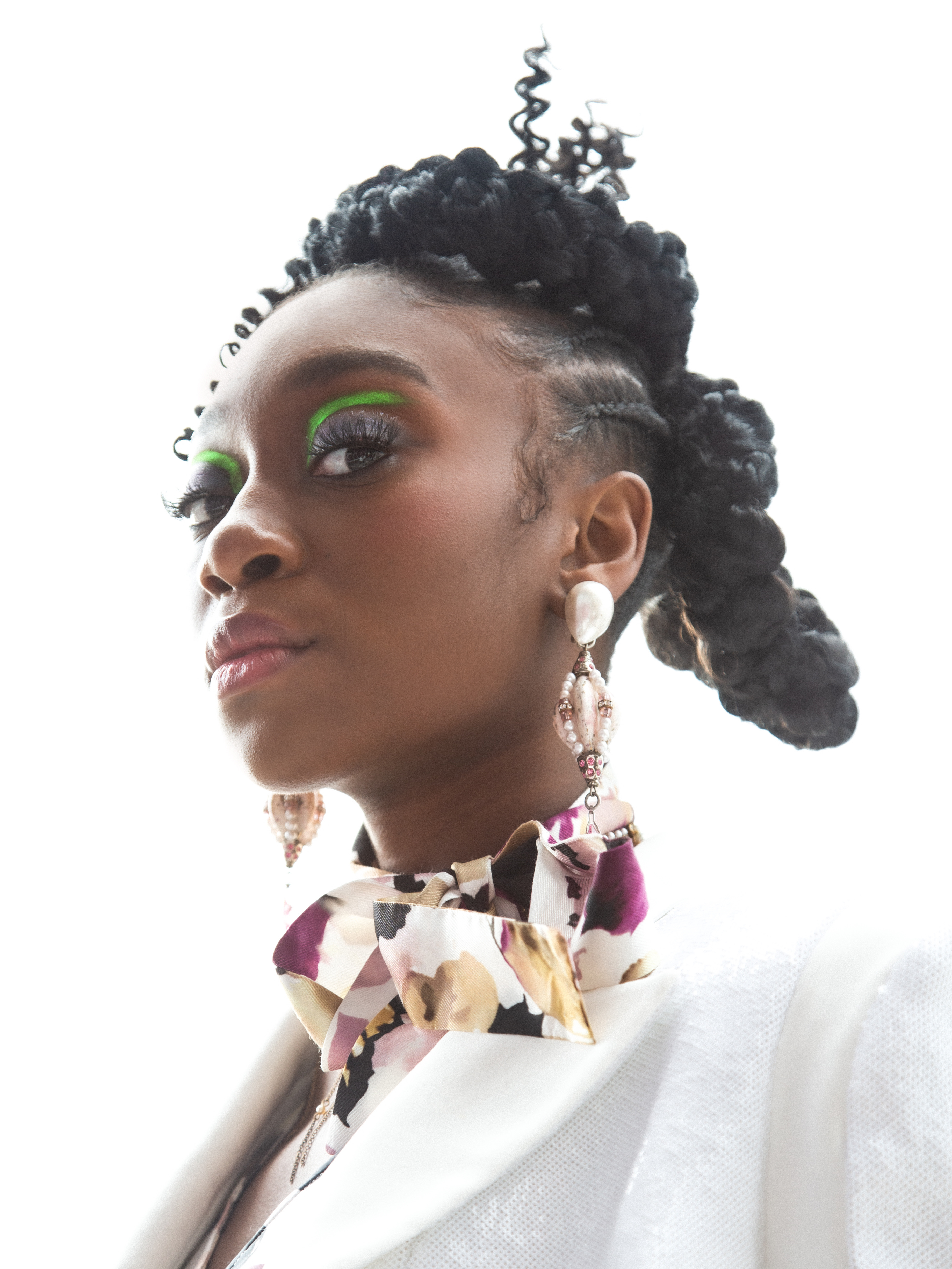
It was while studying with L’Oreal, spurred by a desire to master coloring textured hair, that she was introduced to the world of fashion. One of her mentors invited her to New York Fashion Week. While thrilled with the opportunity, she witnessed something that motivates her to this day. “There were stylists who didn’t know how to work with textured hair. One of the Black girls had a couture dress taken away from her and was assigned ‘urban wear’ as a result of not having experience with textured hair. I saw the model’s face. She said, ‘This always happens to me.’ I was livid. They had beautiful ’fros, but the texture was totally different than what the other stylists knew. I said, ‘You are going to get into that couture dress.’ I created a French roll on her. The designer was like, ‘Oh, my God,’ and gave her the couture dress. When I turned around, there was a long line of models waiting for a chance for me to do their hair. I’m not talking about black models only.”
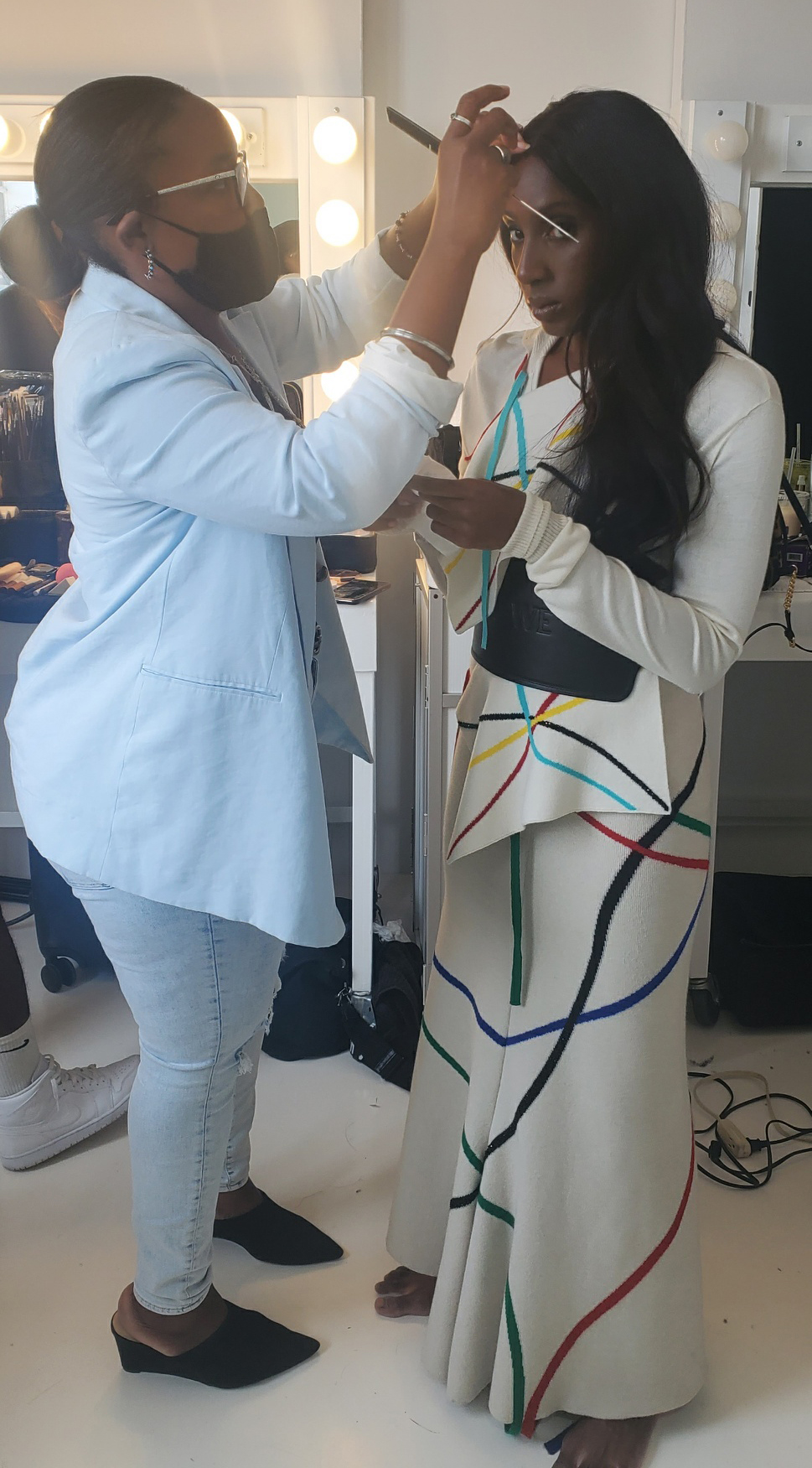
A blonde with wiry hair was next. “She always wore her hair straight and she had all these fly-aways. I used one of my products on her that wasn’t available at the time and is now part of my hair care line, and she just took the jar. She said, ‘We don’t have this and I need it.’ That began my love affair with the art of doing hair for shows, fashion spreads, and television.”
That experience emphasized the conversations we are still having today. Bergamy explains “the understanding of knowing how important it is to have people in different spaces that look like you and therefore know about you and are able to relate. If we have a conversation about hair or texture, they want to know they are understood.” She echoes the story that people of color have been sharing in the hopes of being heard and understood. “In the film and TV space, there’s still not a lot of African Americans or people of color, despite there being more people of color that are on screens and in media so, we should expand the creative side. There’s still areas that need work.”
The native New Yorker who hails from the Bronx, beams when asked about her work. “Ultimately, it’s about creating the best look for you. It’s about facial structure, face shapes, the clothing, and occasion.” The connection of empathy that originally stoked her interest in hair still manifests. “Making people feel and look beautiful, I think that that’s where my real reward is, making a person feel their best and tapping into their heart chakra, of realizing how beautiful they really are. I’m like, “Oh, I’m going to make your heart explode. Just making you feel amazing about yourself.”
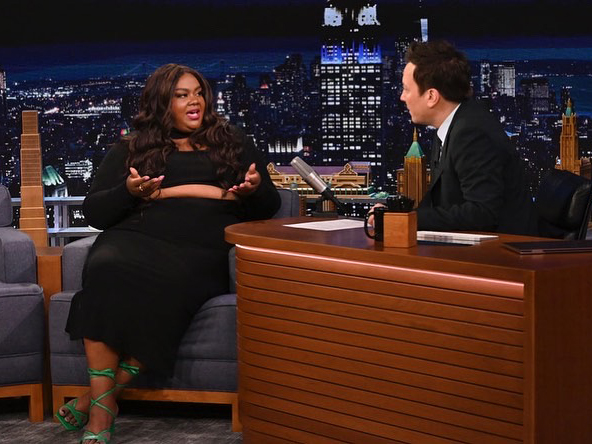
The CEO of Contents Hair Care which she started, notes that our bias goes towards women when talking ‘hair,’ but that men are getting in on the action, requiring Bergamy to do barber work too. “If I’m working on a guy of color, I’m doing more barber work. On a Caucasian client, I’m doing more scissor over comb, more blending.”
Queried if Black men seem to be more daring on the red carpet, she laughs. “It goes back to what we were talking about at the top of the conversation. It’s definitely a swag thing. It’s just a part of our culture, to make sure that everything is intact from head to toe. I was watching a documentary about hip-hop. It was talking about how it was so important back in the ’80s for us to make sure that our outfit was flush. At that time when you didn’t have so much, your only escape may have been to party or to have fun – that was the thing to do – to make sure that everything was smooth.” She shrugs. “It’s just a part of our culture, part of our history to really make sure we have this swag about ourselves.” She effuses, “We are so creative with it. That’s one of our things that is included in our popular culture, making sure we are walking the walk, and looking good doing it.”